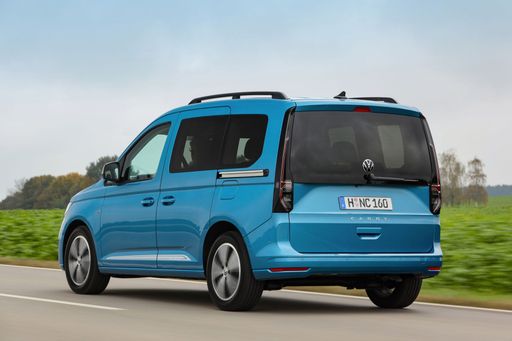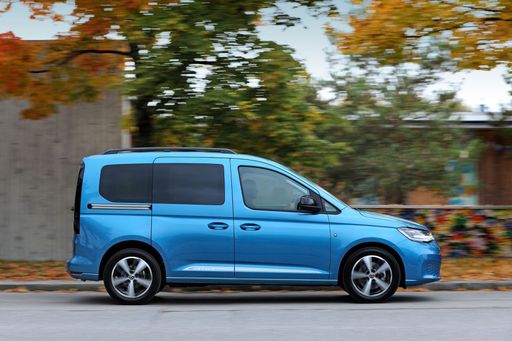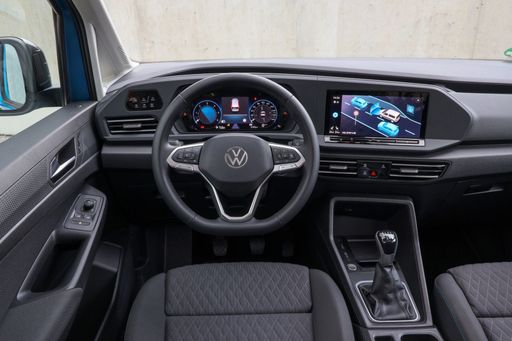Alfa Romeo Junior vs VW Caddy – Which model is better for everyday use?
Everyday use, family trips or long-distance drives – here’s where the differences show.
Discover whether Alfa Romeo Junior or VW Caddy fits your lifestyle better.
Costs and Efficiency:
Price and efficiency are key factors when choosing a car – and this is often where the real differences emerge.
Alfa Romeo Junior has a hardly perceptible advantage in terms of price – it starts at 25700 £, while the VW Caddy costs 27800 £. That’s a price difference of around 2088 £.
Fuel consumption also shows a difference: VW Caddy manages with 0.50 L and is therefore significantly more efficient than the Alfa Romeo Junior with 4.80 L. The difference is about 4.30 L per 100 km.
As for range, the Alfa Romeo Junior performs decisively better – achieving up to 410 km, about 289 km more than the VW Caddy.
Engine and Performance:
Under the bonnet, it becomes clear which model is tuned for sportiness and which one takes the lead when you hit the accelerator.
When it comes to engine power, the Alfa Romeo Junior has a significantly edge – offering 280 HP compared to 150 HP. That’s roughly 130 HP more horsepower.
In acceleration from 0 to 100 km/h, the Alfa Romeo Junior is significantly quicker – completing the sprint in 5.90 s, while the VW Caddy takes 11.40 s. That’s about 5.50 s faster.
In terms of top speed, the Alfa Romeo Junior performs barely noticeable better – reaching 206 km/h, while the VW Caddy tops out at 186 km/h. The difference is around 20 km/h.
There’s also a difference in torque: Alfa Romeo Junior pulls minimal stronger with 345 Nm compared to 320 Nm. That’s about 25 Nm difference.
Space and Everyday Use:
Beyond pure performance, interior space and usability matter most in daily life. This is where you see which car is more practical and versatile.
Seats: VW Caddy offers clearly perceptible more seating capacity – 7 vs 5.
In curb weight, Alfa Romeo Junior is slightly lighter – 1380 kg compared to 1575 kg. The difference is around 195 kg.
In maximum load capacity, the VW Caddy performs clearly better – up to 3700 L, which is about 2420 L more than the Alfa Romeo Junior.
When it comes to payload, VW Caddy decisively takes the win – 710 kg compared to 420 kg. That’s a difference of about 290 kg.
Who comes out on top?
Overall, the VW Caddy shows itself to be outperforms in nearly all aspects and secures the title of DriveDuel Champion.
It convinces with the more balanced overall package and proves to be the more versatile choice for everyday use.
 @ Volkswagen AG / VW Media
@ Volkswagen AG / VW Media
VW Caddy
Alfa Romeo Junior
The Alfa Romeo Junior captures the essence of Italian design with its sleek lines and compact dimensions, making it an icon of elegance and performance. With a spirited driving experience and a charming retro aesthetic, it appeals to enthusiasts and casual drivers alike. This delightful car embodies the brand's rich heritage while remaining a fun and engaging option for those seeking a unique automotive experience.
details @ Alfa Romeo / Stellantis Media
@ Alfa Romeo / Stellantis Media
 @ Alfa Romeo / Stellantis Media
@ Alfa Romeo / Stellantis Media
 @ Alfa Romeo / Stellantis Media
@ Alfa Romeo / Stellantis Media
VW Caddy
The VW Nutzfahrzeuge Caddy Hochdach-Kombi is a versatile choice for those seeking extra space and practicality in their everyday vehicle. With its functional high roof and adaptable interior, it easily accommodates both passengers and cargo. The Caddy also stands out with its modern design and features aimed at providing comfort and convenience on the road.
details @ Volkswagen AG / VW Media
@ Volkswagen AG / VW Media
 @ Volkswagen AG / VW Media
@ Volkswagen AG / VW Media
 @ Volkswagen AG / VW Media
@ Volkswagen AG / VW Media
 @ Volkswagen AG / VW Media
@ Volkswagen AG / VW Media
 @ Alfa Romeo / Stellantis Media
@ Alfa Romeo / Stellantis Media
|
 @ Volkswagen AG / VW Media
@ Volkswagen AG / VW Media
|
|
|
|
Costs and Consumption |
|
|---|---|
|
Price
25700 - 41600 £
|
Price
27800 - 45900 £
|
|
Consumption L/100km
4.8 - 5.4 L
|
Consumption L/100km
0.5 - 6.9 L
|
|
Consumption kWh/100km
15.1 - 17.5 kWh
|
Consumption kWh/100km
-
|
|
Electric Range
344 - 410 km
|
Electric Range
116 - 121 km
|
|
Battery Capacity
0.4 - 51 kWh
|
Battery Capacity
19.70 kWh
|
|
co2
0 - 119 g/km
|
co2
10 - 165 g/km
|
|
Fuel tank capacity
44 - 45 L
|
Fuel tank capacity
50 L
|
Dimensions and Body |
|
|---|---|
|
Body Type
SUV
|
Body Type
High Roof Estate
|
|
Seats
5
|
Seats
5 - 7
|
|
Doors
5
|
Doors
5
|
|
Curb weight
1380 - 1689 kg
|
Curb weight
1575 - 1998 kg
|
|
Trunk capacity
340 - 415 L
|
Trunk capacity
-
|
|
Length
4173 mm
|
Length
4500 - 4853 mm
|
|
Width
1781 mm
|
Width
1855 mm
|
|
Height
1505 - 1538 mm
|
Height
1819 - 1860 mm
|
|
Max trunk capacity
1205 - 1280 L
|
Max trunk capacity
2556 - 3700 L
|
|
Payload
390 - 420 kg
|
Payload
501 - 710 kg
|
Engine and Performance |
|
|---|---|
|
Engine Type
Electric, Petrol MHEV
|
Engine Type
Petrol, Diesel, Plugin Hybrid
|
|
Transmission
Automatic
|
Transmission
Manuel, Automatic
|
|
Transmission Detail
Dual-Clutch Automatic, Reduction Gearbox
|
Transmission Detail
Manual Gearbox, Dual-Clutch Automatic
|
|
Drive Type
Front-Wheel Drive, All-Wheel Drive
|
Drive Type
Front-Wheel Drive, All-Wheel Drive
|
|
Power HP
136 - 280 HP
|
Power HP
102 - 150 HP
|
|
Acceleration 0-100km/h
5.9 - 9.1 s
|
Acceleration 0-100km/h
11.4 - 14 s
|
|
Max Speed
150 - 206 km/h
|
Max Speed
173 - 186 km/h
|
|
Torque
230 - 345 Nm
|
Torque
220 - 320 Nm
|
|
Number of Cylinders
3
|
Number of Cylinders
4
|
|
Power kW
100 - 207 kW
|
Power kW
75 - 110 kW
|
|
Engine capacity
1199 cm3
|
Engine capacity
1498 - 1968 cm3
|
General |
|
|---|---|
|
Model Year
2024 - 2025
|
Model Year
2024
|
|
CO2 Efficiency Class
A, C, D
|
CO2 Efficiency Class
E, F, B
|
|
Brand
Alfa Romeo
|
Brand
VW
|
What drive types are available for the Alfa Romeo Junior?
Available configurations include Front-Wheel Drive or All-Wheel Drive.
The prices and data displayed are estimates based on German list prices and may vary by country. This information is not legally binding.
